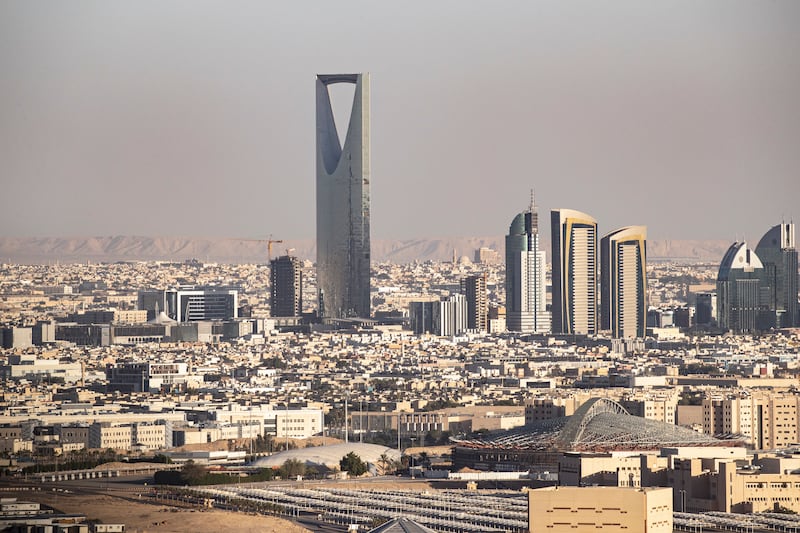Gulf Co-operation Council economies are expected to grow at a faster pace in 2022 as they continue to recover from the coronavirus pandemic on the back of higher oil prices and the expansion of their non-oil sector, Emirates NBD has said.
Gulf economies are forecast to grow 5.1 per cent on average this year, after rebounding to 2.3 per cent in 2021 and following a 4.9 per cent contraction the previous year when the pandemic began, Dubai’s biggest lender by assets said in the report, written by its chief economist and head of research Khatija Haque.
“The recovery in the GCC economies gained momentum in the second half of 2021 as travel restrictions eased, tourism rebounded and domestic demand strengthened,” the report said.
The UAE introduced economic stimulus worth Dh388 billion ($105.72bn) to offset the impact of the pandemic that tipped the world economy into its worst recession since the 1930s. That includes the central bank's Dh50bn Targeted Economic Support Scheme (Tess) to boost liquidity in the financial and banking sector.
Last month, the Central Bank of the UAE said it will extend support measures aimed at helping lenders mitigate the effects of the Covid-19 pandemic by six months until mid-2022 to back the country's continued economic recovery. Relief measures related to banks' capital buffers, liquidity and stable funding requirements will be extended until June 30 for all lenders operating in the UAE.
Emirates NBD expects the UAE economy to continue to recover in 2022 accelerating to 4.6 per cent this year from an estimated 1.9 per cent in 2021. That's slightly higher than the central bank's estimates which put growth at 4.2 per cent this year, higher than the 3.8 per cent previously forecast for 2022.
“The UAE probably recorded a budget surplus in 2021, and with oil prices likely to average around $70 per barrel again in 2022, there is fiscal space for increased public sector investment in strategic growth sectors,” the lender said.
Saudi Arabia and other countries in the region have also supported their economies by introducing initiatives and stimulus packages while focusing on structural reforms, reducing budget deficits and adhering to tighter spending plans.
“We expect this approach to continue in 2022. Saudi Arabia, the region’s largest economy, has pencilled in a 6 per cent decline in spending in the 2022 budget even as revenue projections were increased,” Emirates NBD said.
“With Brent oil forecast to average just under $70 per barrel in 2022 and GCC oil production expected to rise, we expect Saudi Arabia, the UAE and Qatar to post budget surpluses this year, while Oman and Bahrain are likely to see their budget deficits narrow further.”
Investment by government-related entities and sovereign wealth funds will also remain a source of growth in the GCC, even as direct budget spending may be contained.
The outlook for the GCC in 2022 remains “broadly constructive” despite uncertainty surrounding the Omicron variant, the report said.
"Even if the current wave of Covid-19 infections weighs on services sectors, particularly tourism and hospitality in the near term, we expect the impact on the broader economy will be limited,” Emirates NBD said.
The structural reforms carried out over the last couple of years, along with a much stronger fiscal position and recovering domestic demand, will support growth across Gulf countries this year and beyond, it said.
Last year, the UAE said it will offer longer-term residency visas to broader categories of residents and new pathways to citizenship, in addition to wide-ranging changes to personal and labour laws, allowing 100 per cent foreign ownership of onshore companies and most recently, the decision to align the country’s working week with that of major economies.
In Saudi Arabia, significant progress has been made in cutting red tape, introducing wide-ranging social reforms and investing in infrastructure to enable greater private sector investment and participation in the economy.
“With Opec+ expected to continue increasing oil production in the coming months, the hydrocarbon sector should contribute positively to the UAE’s GDP growth in 2022 for the first time in three years,” the Emirates NBD report said.
The Opec+ oil producers, led by Saudi Arabia and Russia, are also planning to increase output from July as global economies continue to recover from the pandemic pushing demand higher. The group agreed to add another 400,000 barrels of oil per day to the market from February.
Higher interest rates and a stronger US dollar could prove headwinds to growth in the UAE in 2022, but “the structural reforms implemented over the last couple of years will help to boost investment and drive growth over the medium term”, Emirates NBD said.
The bank pointed to regional purchasing manager indexes (PMI) of Saudi Arabia and the UAE that show growth of the non-oil private sector economy in both the countries remained well above 50 level indicating expansion, despite concerns about the rapid spread of the Omicron coronavirus variant.







